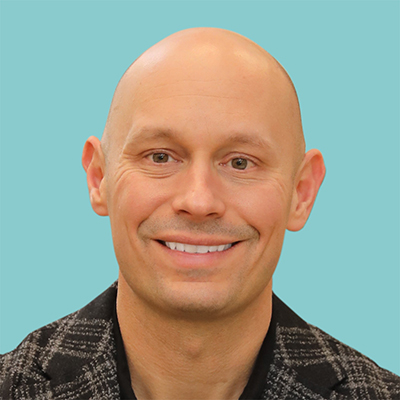Hollywood has a way of portraying philosophers as pretentious finders of fault. (Emily in Paris, I love you, but you are guilty of this.) What’s more, the mention of the stoic philosopher leads to images of people who are emotionless and incapable of feeling (Spock, anyone?).
These portrayals are unfortunate, because we all stand to learn a great deal from the stoics of ancient times. Especially agilists.
Over the last year, my wife and I have focused a portion of each day studying the stoic philosophers Chrysippus, Marcus Aurelius, Seneca the Younger, and Epictetus. Our daily meditation has helped us be in better control of our emotions and hone our world view. It’s helped me become a better consultant and coach. Most significantly, the lessons have helped my wife process what she has seen as a nurse in the year of COVID.
Each of us, agilist or otherwise, can build a healthier outlook by taking a moment to reflect on these ancient lessons. Here are a few insights I’ve gained that have helped me better engage with enterprises and agilists during this tumultuous year.
The discipline of perception
Clarity. For an agilist, clarity is achieved through a combination of education, experience, and making mistakes. The stoics remind us that we should remain humble as we gain more clarity. As we learn to observe, absorb, and reflect, we begin to recognize patterns, and we need to remain empathetic to the circumstances that cause these patterns. The more we learn, the more open we become to others’ circumstances, emotions, and conflicts.
Passions and emotions. As a coach or consultant, it’s incredibly important that we lead with passion, while keeping our emotions in check. The stoics remind us that the journey belongs to our client, and it is our responsibility to walk that journey with them. With a calm dignity, we must steady the impulse to act on what we think we know, to not give in to the self-fulfilling prophecy of fear that may be felt by those we are guiding, and to avoid making the job of change harder than it needs to be.
Awareness. The fall of many energetic agilists comes from an eagerness to act before fully appreciating the situation at hand. Awareness is where philosophy begins, and is the starting point of any transformative journey. We must observe, take the time to appreciate history, and seek to understand the interconnected nature of the people working within the system. We work with a firm footing in the present but with a keen eye on the future. One day, it will all make sense.
Unbiased thoughts. The Agile community is full of some of the most volatile, well-intended people I have ever come across. To their own undoing, many have firm opinions based on perception and bias. As the stoics teach us, the more we think we know about an issue, the less we understand. A person who remains unbiased, as all agilists should, will seek to understand, do their own research before forming an opinion, and welcome a change of perspective.
To be so firmly rooted in a position of being (Agile) or not leaves one in a position to be alienated and left behind by an ever-evolving idea.
The discipline of action
Right action. As we lead others along the pathway to a new way of working, it’s a common mistake to tell others what to do—especially when they ask you to. The problem with direction and execution is that context and intention, and thereby learning, are lost. As a SAFe coach or SAFe consultant, we must avoid this temptation and instead show a client what they need to do. You can accomplish this through demonstration, facilitation, and showing up to perform even on the hard days. In the spirit of carpe diem, we, along with our clients, must do our best to make the most of the present while maintaining awareness of the end goal, and giving little thought to the future.
Problem solving. In problem solving, we have to be flexible. As we learn through many problem-solving tools, the problem is rarely what we think it is. It’s in our best interest to remain flexible and to have a mental reverse clause, no matter how well we think we know what we know (the freedom to admit when you’re wrong.) There isn’t room for pride in problem solving; growth and learning is what we’re here for.
Duty. This is the single world embodying everything it means to be a servant leader. Servant leadership is a rallying flag common to nearly all agilists, but true servant leadership is a call few are willing to answer. The sense of duty that comes with putting the needs of others before your own is one of selfless service and sacrifice. As a servant leader, you must show up, do your job, learn, and embrace the ethos that doing the right thing for those you’re serving is the only thing you can do—even if it’s the wrong thing for you personally.

Pragmatism. One of the most important skills that pragmatism teaches those of us with an agile heart is to not expect perfection. Perfect agile is subjective and should never be the goal. Instead, focus on helping clients achieve better business outcomes, helping employees attain a healthier and more fulfilling work experience, and creating a culture that is focused on outcomes and free of blame.
The discipline of will
Fortitude and resilience. You’re going to fail. People will struggle. People will be angry with you. Do you have the fortitude to endure? Are you resilient enough to endure this again and again? Transformation is a messy job. It’s often thankless until the moment it isn’t, and then the agilist is on to the next engagement and asked to start over. It’s rare that the agilist is in a position to enjoy the fruits of their labor, but it shouldn’t be about that. We work with a steady resolve. We’re resistant to the blame, the negativity, and the haters. Our hidden power is to know what the pain is for. We know the indisputable benefits of our craft. We’ve seen lives transform and organizations flourish through this new way of working. All reasons why we shall endure, again and again.
Virtue and kindness. The most beautiful thing any of us can do is to be kind to others. Kindness is especially important when others are fraught with struggle and may not be able to be kind to you. Will you look out for those who are unkind anyway? The stoics teach us that character is fate. People won’t remember what you said, but they will remember how you made them feel, especially when they may be embarrassed by how they made you feel.
Acceptance. The strong accept responsibility. They never complain, they never explain. Instead, they seek to control their own attitudes and responses to those events. The only thing that could have happened will happen, and we must seek to learn all we can from that outcome. As a stoic agilist, we must do our best to apply the guidance of Marcus Aurelius (Meditations, 8.7), which suggests that our acceptance of events and nature moves freely when it:
- Accepts nothing false or uncertain
- Directs its impulses only to acts for the common good
- Limits its desires and aversions only to what’s in its own power
- Embraces everything nature assigns it
We accept the outcome of our best efforts, reflect, grow, and share.
Meditation. A career focused on changing human behavior and organizational psychology is not for the faint of heart. It takes strong resolve to let the little things go so that we can elevate ourselves from the day’s chaos to evaluate the big picture. Are we making progress? What is the goal? Where is their pain? Am I inflicting pain? How can I help make the situation better? Am I the person best suited to help this team?
As agilists, we must take the time to reflect, to ensure we’re not burning the candle at both ends, and to give thanks for the invitation to help others do what is hard. Our calling is noble, our purpose transcendent, and the impact undeniable. By studying the stoics we can help assure that we are showing up as our best selves and that we stay firmly rooted in the intent that brought us to this type of work.
If you are interested in developing a stoic mindset, check out The Daily Stoic by Ryan Holiday.
About Adam Mattis

Adam Mattis is a SAFe Program Consultant Trainer (SPCT) at Scaled Agile with many years of experience overseeing SAFe implementations across a wide range of industries. He’s also an experienced transformation architect, engaging speaker, energetic trainer, and a regular contributor to the broader Lean-Agile and educational communities. Learn more about Adam at adammattis.com.
Share:
Back to: All Blog Posts
Next: Taking the Sting Out of Remote Teaching with Scaled Agile’s Virtual Classroom